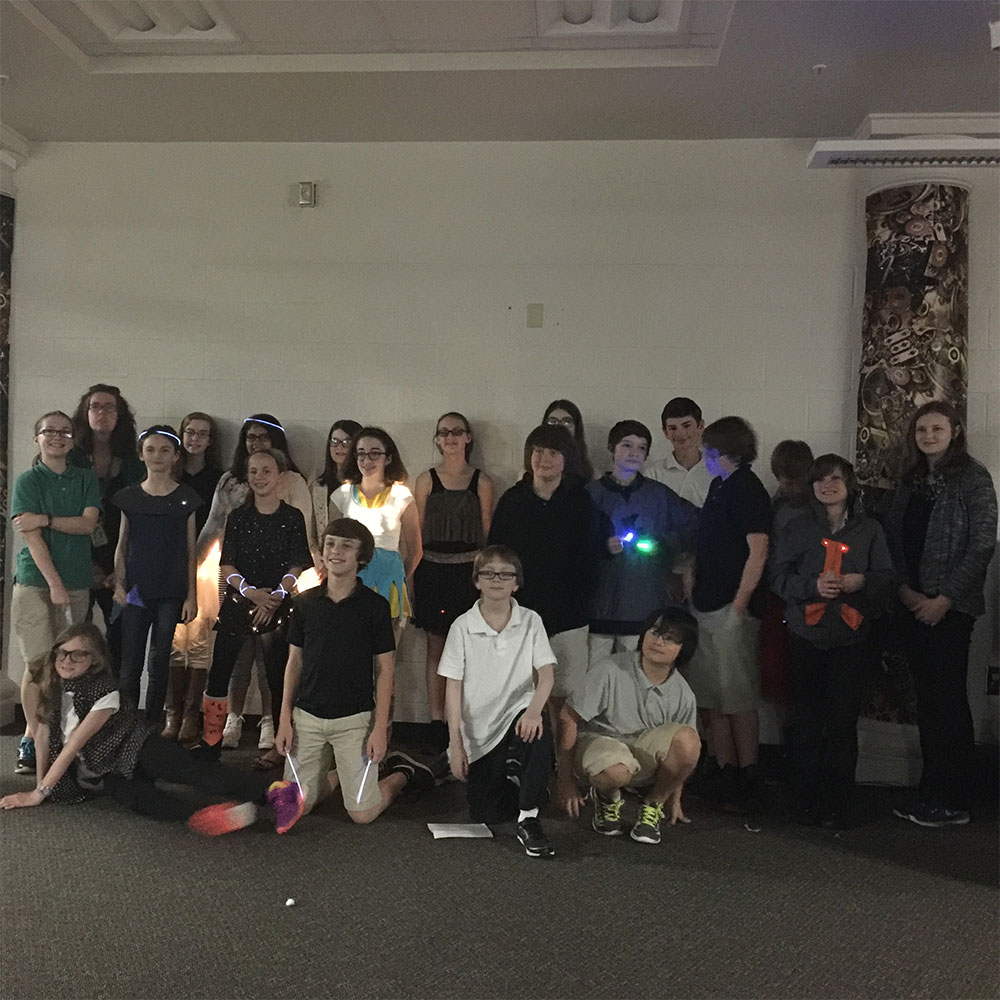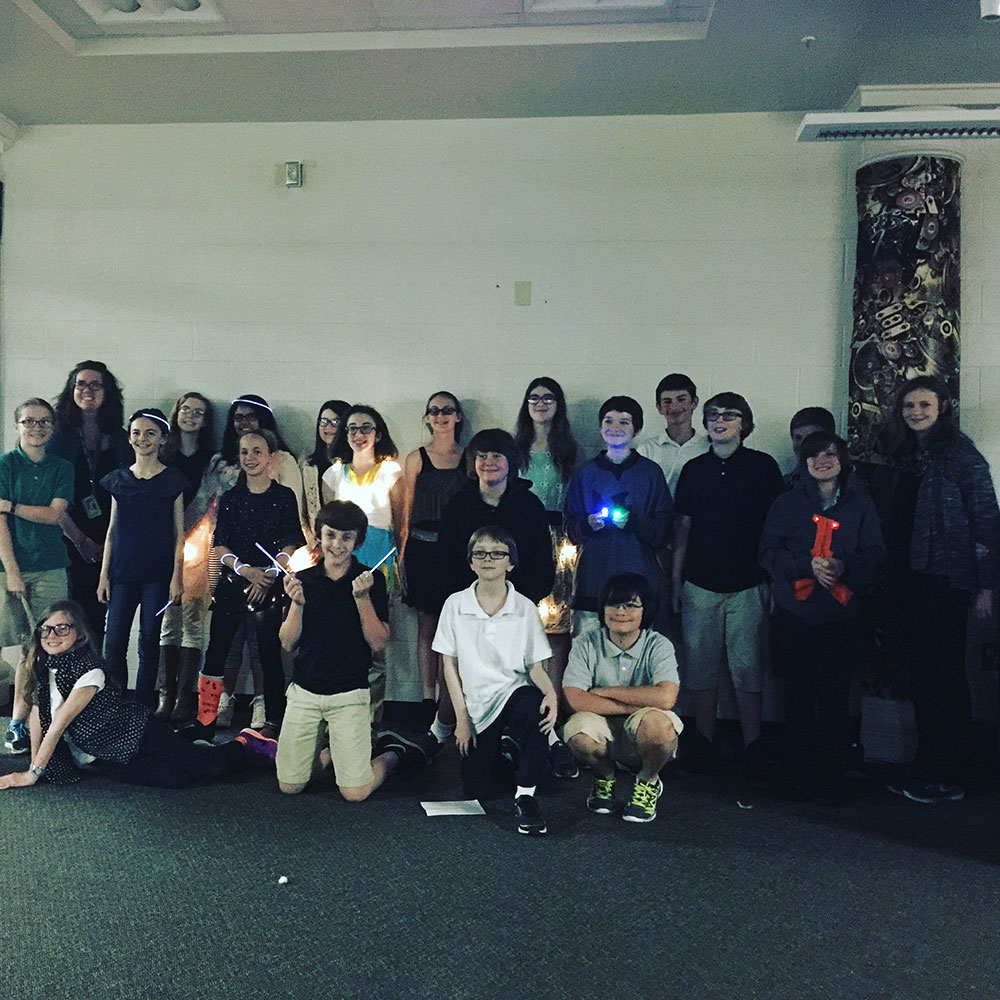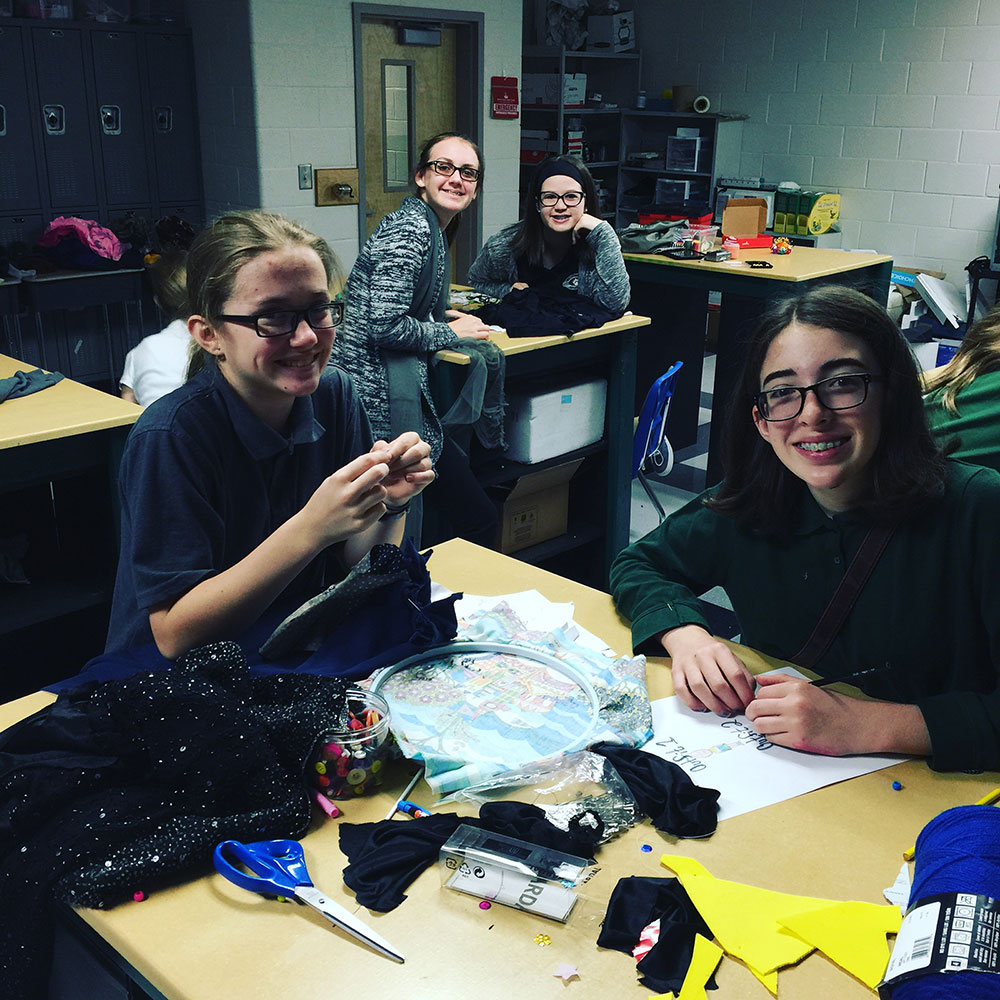Grade 6: Circuitry
Unit Description
In this arts integrated unit, students will use movement and the creation of human circuits to aid in the comprehension of the direct purposes of conductors, insulators and electric circuits. Students will be able to identify and articulate the two types of simple circuits (parallel & series) and how they work. Students will be actively engaged in the discovery of the upcycling movement. Students will design, sew, and create an outfit that contains a sewn circuit that lights up an LED. The culmination of the project will be a school-wide fashion show in which students will debut their wearable circuitry fashions.
Unit Essential Questions
- How can dance/movement aid in the comprehension of conductors, insulators and electric circuits?
- How can knowledge of the upcycle movement assist in the creation of wearable circuits?
Real World Context
The fundamental process that is used on an everyday basis in our daily lives to turn on and off light switches may be basic, however it is the idea of circuitry that we truly depend on. When a computer, television, or any other household electronic device is in use, circuitry is involved. Being able to understand the loop that is created in order for electricity to power such devices is important for students to understand as our world continues to depend on electricity.
Cross-Cutting Interdisciplinary Concepts
Relationships
Simple communication of ideas
Mutual integration of concepts
Table Of Contents
Project 1: Human Circuits
Project 2: Wearable Circuits
Standards
Curriculum Standards
S5P3. Students will investigate electricity, magnetism, and their relationship.
- Investigate static electricity.
- Determine the necessary components for completing an electric circuit.
- Investigate common materials to determine if they are insulators or conductors of electricity.
S8P5. Students will recognize characteristics of gravity, electricity, and magnetism as major kinds of forces acting in nature.
- Demonstrate the advantages and disadvantages of series and parallel circuits and how they transfer energy.
National Standards:
MS-PS2-3. Ask questions about data to determine the factors that affect the strength of electric and magnetic forces. [Clarification Statement: Examples of devices that use electric and magnetic forces could include electromagnets, electric motors, or generators. Examples of data could include the effect of the number of turns of wire on the strength of an electromagnet, or the effect of increasing the number or strength of magnets on the speed of an electric motor.]
Arts Standards
DMSPCR.1 Demonstrates an understanding of creative and choreographic principles, processes, and structures.
DMSPCR.2. Demonstrates an understanding of dance as a way to create and communicate meaning.
VA6MC.1. Engages in the creative process to generate and visualize ideas.
VA6MC.2. Identifies and works to solve visual problems through creative thinking, planning, and/or experimenting with art materials, tools, and techniques.
VA6CU.2. Investigates and discovers personal relationship to community, culture, and the world through making and studying art.
VA6PR.2. Creates artwork reflecting a range of concepts, ideas, and subject matter.
National Standards:
DA:Cr1.1.6.a. Relate similar or contrasting ideas to develop choreography using a variety of stimuli (for example, music, observed dance, literary forms, notation, natural phenomena, personal experience/recall, current news or social events).
Standard 1: Generate and conceptualize artistic ideas and work.
VA:Cr1.1.6a. Combine concepts collaboratively to generate innovative ideas for creating art.
Standard 4: Select, analyze, and interpret artistic work for presentation.
VA:Pr4.1.6a. Analyze similarities and differences associated with preserving and presenting two-dimensional, three-dimensional, and digital artwork.
Character Education
Components
The concept of how electricity moves fluidly via circuits is a perfect example of the concept of being a mindful student/human being.
Mindfulness helps us calm down, and thus, in turn, calms the amygdala, which allows the informational flow to the prefrontal cortex. (The part of our brain that helps us make decisions.) When we are mindful our brain uses a type of circuitry. The amygdala tries to protect us, but often mistakes stress for real threats and in turn stops the prefrontal cortex from getting the information it needs to help us make good choices. When the amygdala is calm, it gives the prefrontal cortex what it needs. The prefrontal cortex’s role is to help us figure things out in order to make well balanced choices. The prefrontal cortex also sends and retrieves memories to and from the hippocampus. When the amygdala is upset, the prefrontal cortex cannot help us. The hippocampus stores and recalls all of our memories. When the amygdala is upset, the hippocampus is unable to store memories or properly bring them to mind. Learning how to be a more mindful person will be useful in many aspects of our daily lives.
Attributes
Personal Responsibility
- Being responsible for tasks that have been assigned.
Being Mindful
- When we are able to be calm, we can easily make better choices.
Team Work
- Having an open mind and being a good listener while working in a group situation.
Summative Assessments
- Reflection Questions (both components): Students will use these questions to reflect on the important parts of the lessons. (See Downloads)
- Parallel Circuit Dance/Movement: Students will show their understanding of elements of a parallel circuit through dance/movement.
- Representations of Parallel & Series Circuits: Students will create representations of parallel and series circuits, identifying the parts that make up that circuit. Students could use any medium to demonstrate this knowledge. For example, poster, ThingLink, Google Presentation, etc.
- Wearable Circuits Fashion Show: Students will assign roles within the group to produce a student run fashion show for their school community. Roles include: models, students will model the outfits in the “runway;” stylists, students that will get the clothing and models prepared for the “runway;” and an “MC,” a student who will introduce the models and the clothing to the audience.
Appendix (See Project Downloads)
- Pre/Post Assessment
- Written Reflection Sheet
Credits
Ideas contributed and edited by: Ashley Bailey, Melissa Dittmar Joy, Shannon Green, Michele McClelland
Grade 6: Circuitry
Additional Resources
Books
- Make: Electronics: Learning Through Discovery by Charles Platt
- Electronics for Kids: Play with Simple Circuits and Experiment with Electricity! by Oyvind Nydal Dahl
- DK Eyewitness Books: Electricity Hardcover by Steve Parker
Websites
- An interactive website all about electricity and circuits:
http://interactivesites.weebly.com/electricity-and-energy.html
Video Examples of Student Work
Photo Examples of Student Work






